Earlier in the month I was doing some Couf researching, and I happened across this oddity on eBay: a vintage, German tenor sax engraved with the stencil name Ace. At first blush I thought: Huh, yet another Dörfler & Jörka name for the stencil chart. Haven’t seen one of these before. Interesting.
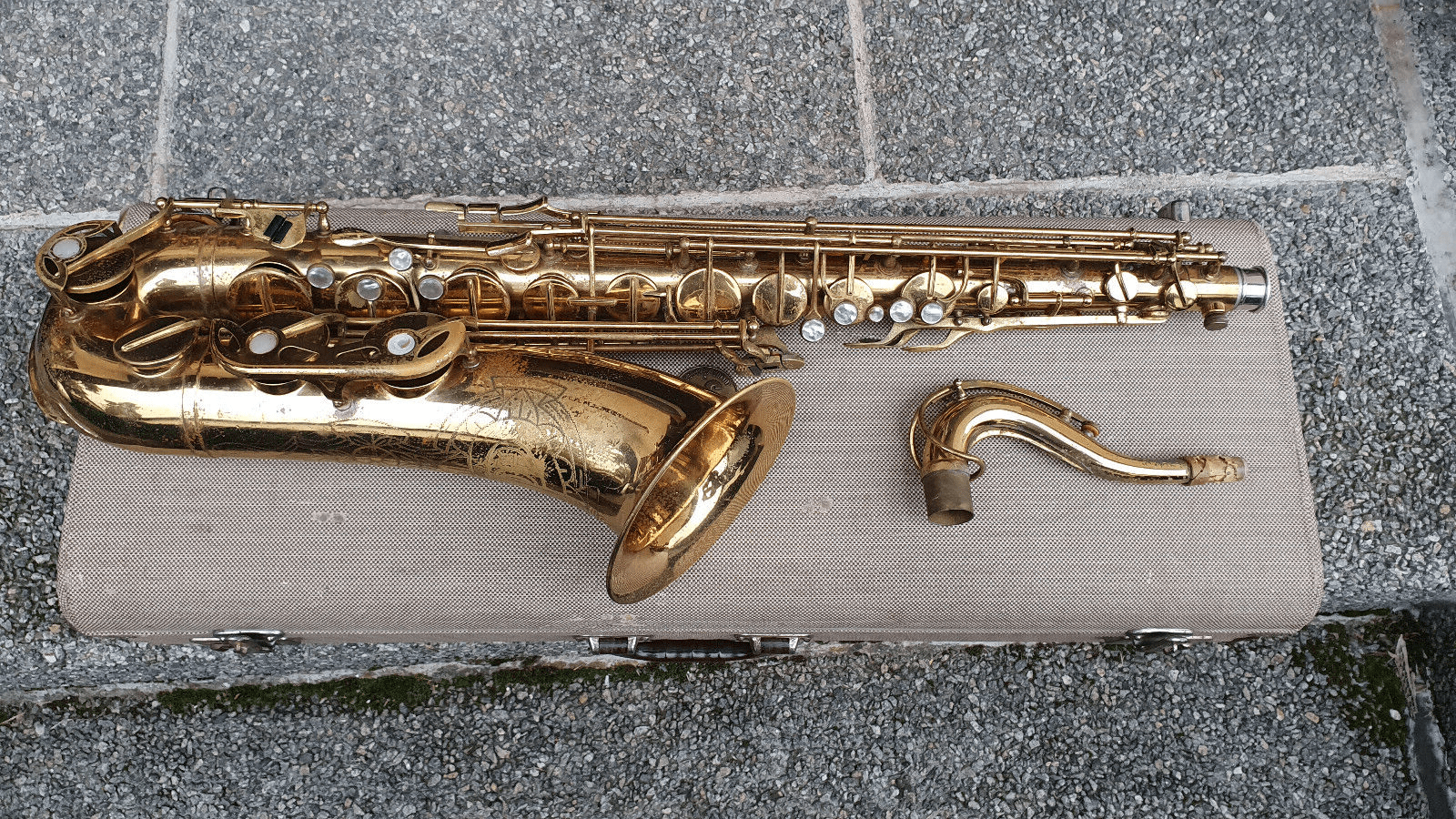
The seller described the Ace tenor like this:
Vintage Tenor saxophone . The bell reads: “ACe” The back reads “Made in Western Germany 17890” In a chat, I read, that it might be a Dörfler & Jörka or a Kohlert. The furnish is partly worn. The instrument needs repair, service and cleaning. There are some very small dents and the pads need service. . It comes in a used Keilwerth case.
Upon closer inspection, something just seemed off. I didn’t get the feeling that I was looking at a D&J horn. Then I thought: Could this be a Keilwerth? Nah, it isn’t one of those either. Too many D&J features.
So if it’s not a D&J, and its not a JK, what exactly is it? It seems to be a mix of the two.
D&J history re-cap
The D&J page on Bassic Sax is due for some serious updates, but here are the important dates and events to keep in mind that are relevant to the discussion at hand.
Year |
Event |
March 1, 1949 |
Josef Dörfler, together with Josef Kühnl and Franz Hamm founded a company that worked for Keilwerth. They would pick up Keilwerth body tubes and bring them to the shop. There they would attach the key work that they had built, based on Keilwerth specs. Afterwards, the horns would be sent back to the Keilwerth factory where the saxophones were turned into the final product. |
September 1, 1950 |
Josef Dörfler, together with financier Hubert Jörka, founded Dörfler & Jörka, Saxophonherstellung. D&J manufactured its own alto and tenor saxophones that were copies of Keilwerth Toneking (with high F#) and The New King (no high F#) saxophones. Although copies, the D&J horns were not 100% identical. |
December 31, 1965 |
Due to declining business, Hubert Jörka retired. Keilwerth took over the production machinery and some half-finished products. The only exceptions to this were the instruments in progress and other materials that were in stock that Dörfler still could sell to someone else. |
January 31, 1968 |
Ace tenor sax # 17890
The current tenor saxophone for sale is stenciled Ace, and based on the photos, could quickly pass as a D&J horn since it checks a number of the brand’s feature boxes.
D&J Feature 1: Key Guard Buttons
 Mother of pearl on the key guards, which while decorative and pretty, make it impossible to adjust the underlying felts for precise key height adjustments without removing the key guard and most likely replacing the felt.
Mother of pearl on the key guards, which while decorative and pretty, make it impossible to adjust the underlying felts for precise key height adjustments without removing the key guard and most likely replacing the felt.

D&J Feature 2, 3 & 4: Post Shape, Serial #, & Country of origin stamping
 The posts are cone shaped. Numerous German board games have had, and continue to have, game pieces shaped like this. Perhaps that was their inspiration?
The posts are cone shaped. Numerous German board games have had, and continue to have, game pieces shaped like this. Perhaps that was their inspiration?
 D&J had a serial numbering system completely different from JK. We see either 4 or 5-digit serials ranging between 5,XXX and 18,XXX. (FYI, during this same period of time, Keilwerth was building horns with serials ranging between circa 23XXX and 54XXX.)
D&J had a serial numbering system completely different from JK. We see either 4 or 5-digit serials ranging between 5,XXX and 18,XXX. (FYI, during this same period of time, Keilwerth was building horns with serials ranging between circa 23XXX and 54XXX.)
 JK stamped their horns just like you see below: Made In Western Germany.
JK stamped their horns just like you see below: Made In Western Germany.

D&J Feature 5: Round Thumb Screw
 Three companies in Germany had round thumb screw attachments on the body of the horn, which were used to fasten the neck: Hohner, Hammerschmidt, and D&J. Yup, this horn has a round thumb screw to fasten the neck, and it isn’t either a Hohner or a Hammerschmidt.
Three companies in Germany had round thumb screw attachments on the body of the horn, which were used to fasten the neck: Hohner, Hammerschmidt, and D&J. Yup, this horn has a round thumb screw to fasten the neck, and it isn’t either a Hohner or a Hammerschmidt.

Features on Ace tenor #17890 that don’t necessarily fit with D&J
While there are certain features that 100% for sure scream: THIS IS A D&J, there are also a few features that we don’t often see in horns made by Dörfler & Jörka.
Engraving
I have spent more than a decade researching D&J saxophones. In the hundreds of examples I have looked at, and the literally thousands of photos of these horns I have seen, on more than 95% the engraving is what gives it away before looking at anything else.
This is what I immediately look for: A large badge for the stencil name, crowned by peaks resembling a mountain range,
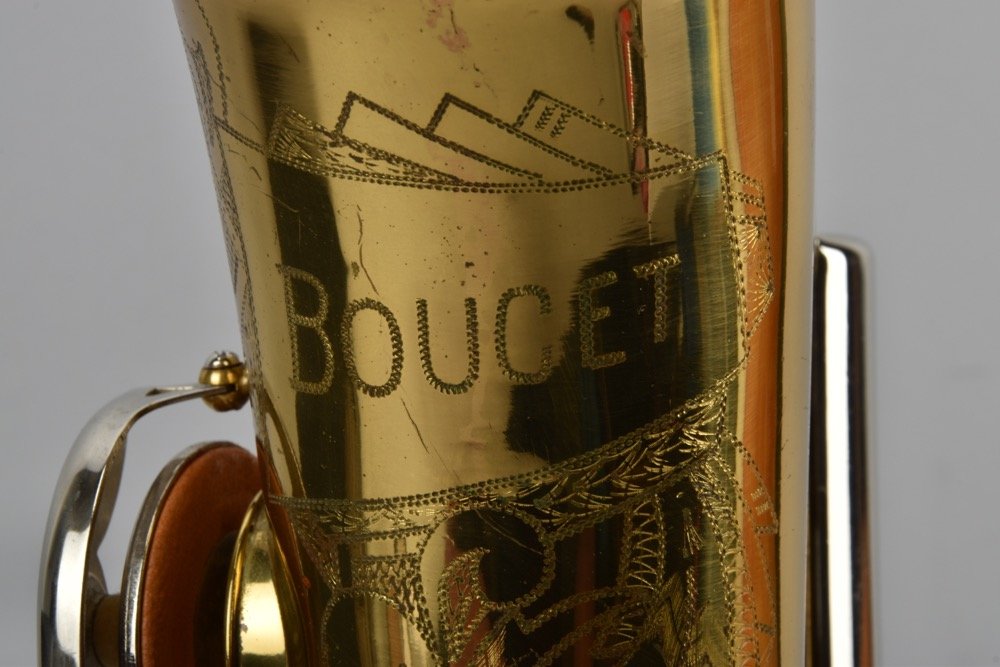
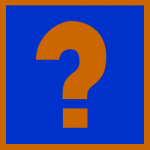 This Ace-stenciled D&J has a style of engraving I haven’t seen before on any of the D&J horns I have encountered. If I had, I would have saved it for our D&J gallery in Bassic Sax Pix. This is why this particular feature is not necessarily a D&J feature, but doesn’t necessarily rule out the brand either.
This Ace-stenciled D&J has a style of engraving I haven’t seen before on any of the D&J horns I have encountered. If I had, I would have saved it for our D&J gallery in Bassic Sax Pix. This is why this particular feature is not necessarily a D&J feature, but doesn’t necessarily rule out the brand either.
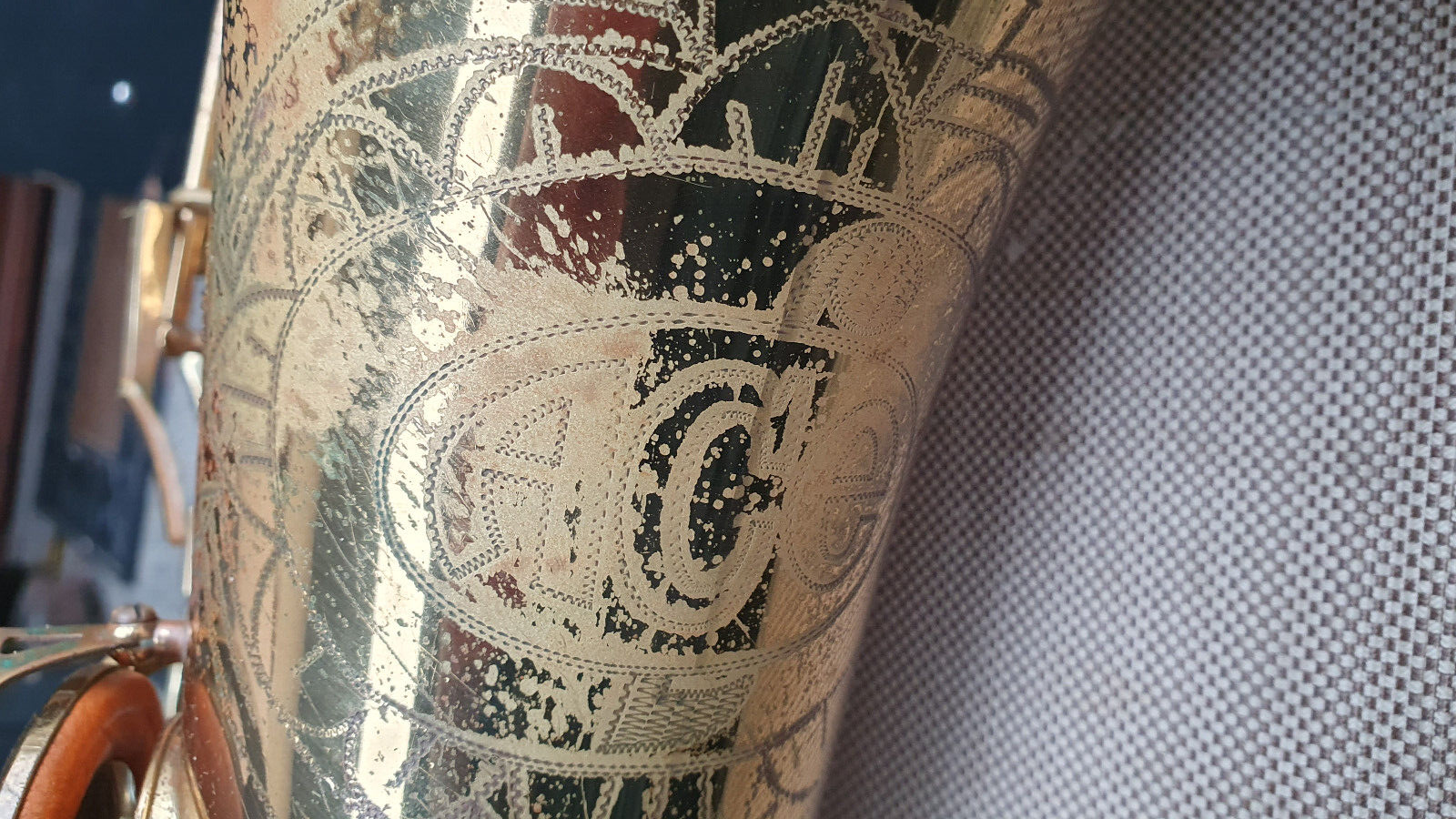
What’s this? A high F# key?
 D&J saxophones came in only a couple of flavours, and of those, the copies of The New King (no high F#) seem to have been the most commonly ordered—if auction and other online sales 60+ years on are any indicator.
D&J saxophones came in only a couple of flavours, and of those, the copies of The New King (no high F#) seem to have been the most commonly ordered—if auction and other online sales 60+ years on are any indicator.
I can only recall seeing one D&J with a high F# key. It was Gebr. Alexander Mainz, alto #12264. (And yes, I just nearly went blind checking our entire gallery of D&J horns, and I could find no other Toneking copy.) 😛 😆
However, since D&J did apparently did make at least some Toneking copies, the presence of a high F# doesn’t necessarily rule out that this tenor was made by them.

If you need a refresher where both JK and D&J put their high F# keys, this pic of my Toneking will help you out. (It can be a bit confusing, since many German horn makers use this location for their high C/D trill keys, like here on my Hohner tenor.)
Features that indicate this sax was perhaps made by Keilwerth and not D&J
As I mentioned, although at first glance this could easily pass as a D&J-made tenor, somethings were just off. Things such as:
The left thumb rest & shape of octave lever of D&J horns
Regardless what name is stencilled on the bell, or what serial number is stamped on their body tubes, D&J saxophones appear to be incredibly consistent in how their left thumb rests are made. Pay particular attention to the following:
- They have MOP—or perhaps white plastic to resemble MOP—on their thumb rest.
- The shape octave lever is tear-shaped.
Both of these features stayed pretty consistent throughout the run of D&J saxophone production, and is illustrated in this De Villers tenor below.
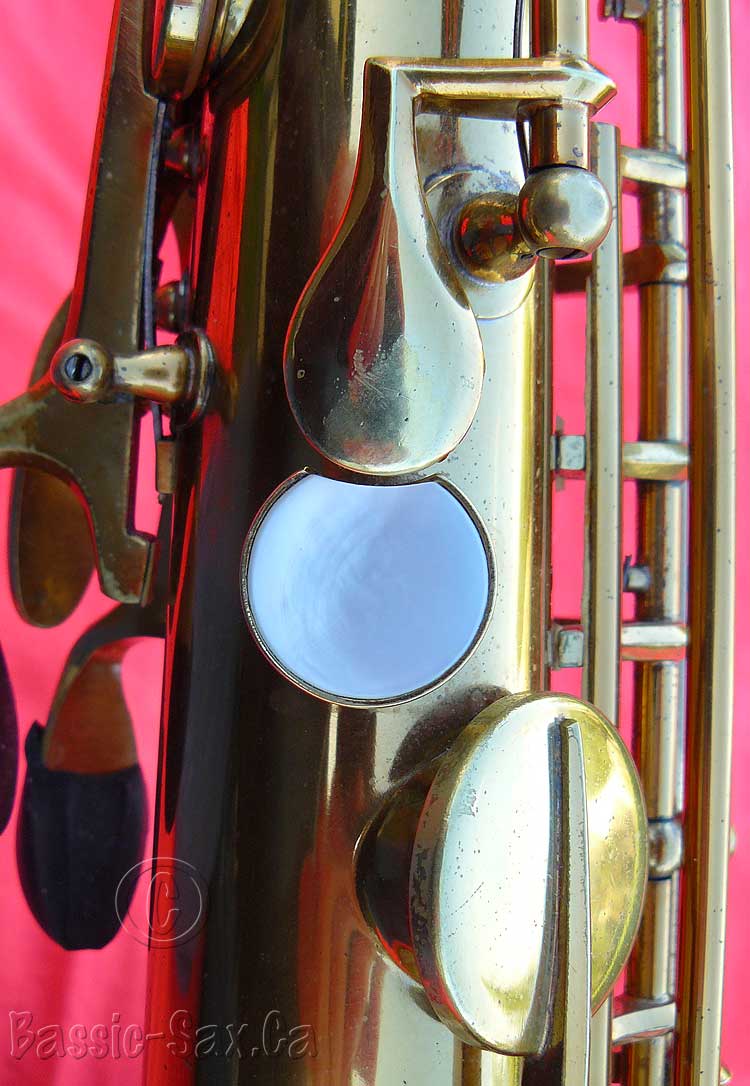
The left thumb rest & shape of octave lever of Keilwerth horns
During the same period of time that D&J was making horns, we see two different types of left thumb rests on JK horns. Additionally, three different styles of octave levers appear to have been present on Keilwerth horns. Two of these octave levers look nothing like we see on the D&J horns, while one does.
1. Metal thumb rest & MOP octave lever
These features on a JK thumb rest looked like this at first:

2. Metal thumb rest & tear drop-shaped metal octave lever

NB: It should be noted that this particular shape of octave mechanism is not very common. I have only seen it in a couple of JK horns.
3. Black plastic thumb rest with restyled octave key lever
At some point JK switched to the black plastic thumb rest, and a completely completely restyled octave lever that looked like this:

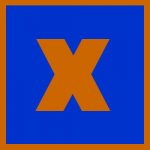 On this Ace tenor sax neither the octave lever, nor the left thumb rest have the characteristics of those we see on D&J horns.
On this Ace tenor sax neither the octave lever, nor the left thumb rest have the characteristics of those we see on D&J horns.
Instead, we see a blend of both earlier, and later JK-made saxophones with the earlier version octave lever, and the latter version thumb rest.
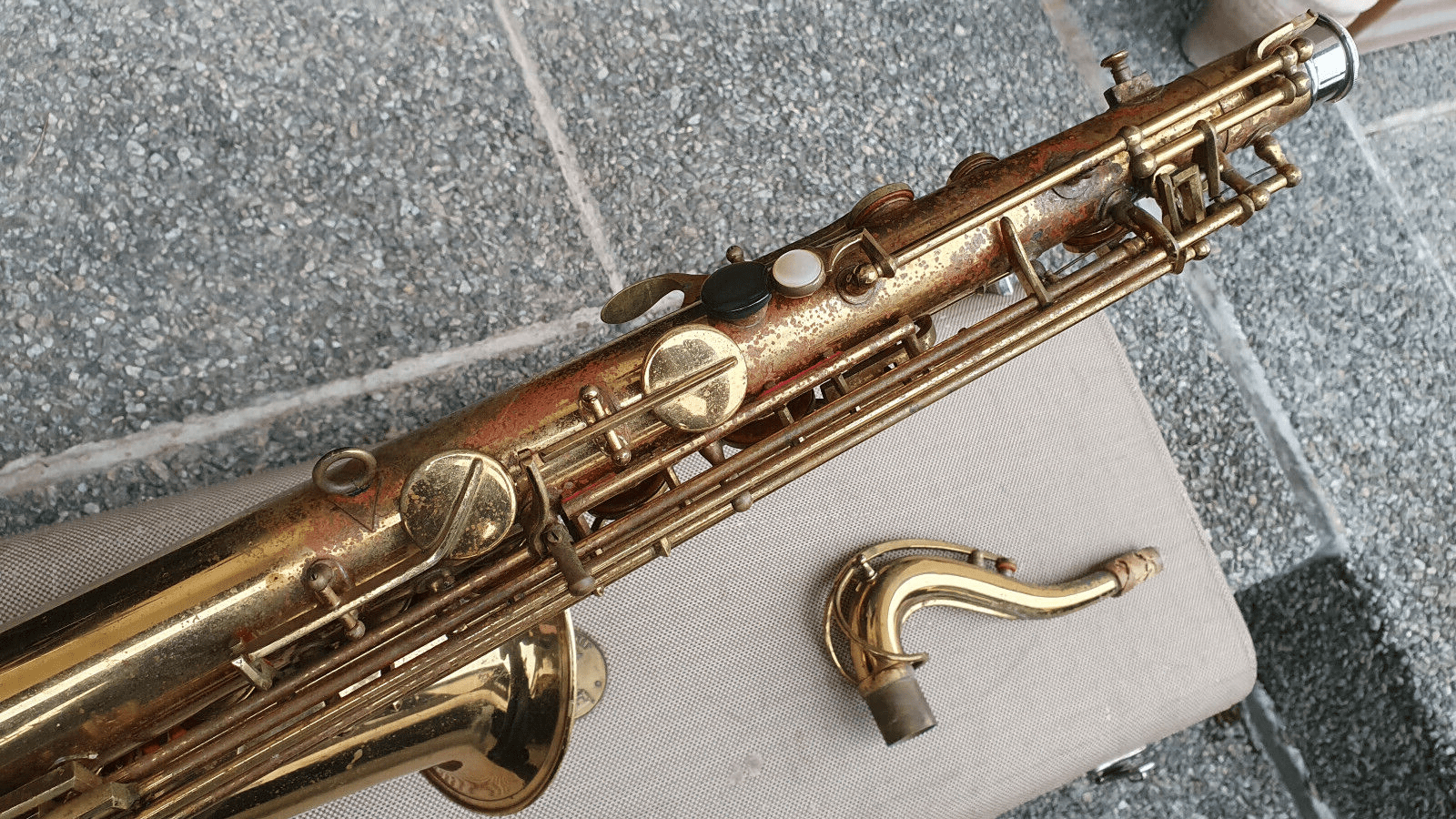
Octave mechanism
Also shown in the above photo of the Ace tenor, is the octave mechanism. Note its design.
D&J octave mechanism #1
Now compare that octave mechanism design to the one below, which is from a D&J-made Senator. You clearly see some differences.

D&J octave mechanism #2
D&J did change their design over time. Here the octave mechanism of a slightly newer D&J-stencilled Carl Ludwig tenor. Although closer in design, it too is not an identical match to the Ace tenor.

 It is clear that the octave mechanism on the Ace tenor is not the same as those we see on D&J horns.
It is clear that the octave mechanism on the Ace tenor is not the same as those we see on D&J horns.
Keilwerth octave mechanism
Keilwerth did change their octave mechanisms as well—those changes appear to have coincided with the changes to the shapes of the octave key on their horns. However, if we look at the octave mechanisms on the horns that have the same shape of octave lever as this Ace does, we can see that they are identical.
Features that really tell us nothing about the horn’s origins
When I first saw the G# key, I immediately thought: Ah hah, it’s a Keilwerth for sure! But then upon closer inspection, I started to wonder what I was looking at. It left me with more questions than answers. See for yourself and be the judge.
Left pinkie cluster & Mechanism
Note the shape of D&J’s left pinkie cluster. As with their octave lever design, the design of this key cluster appears to have remained constant over the horns’ production run.
D&J key shapes
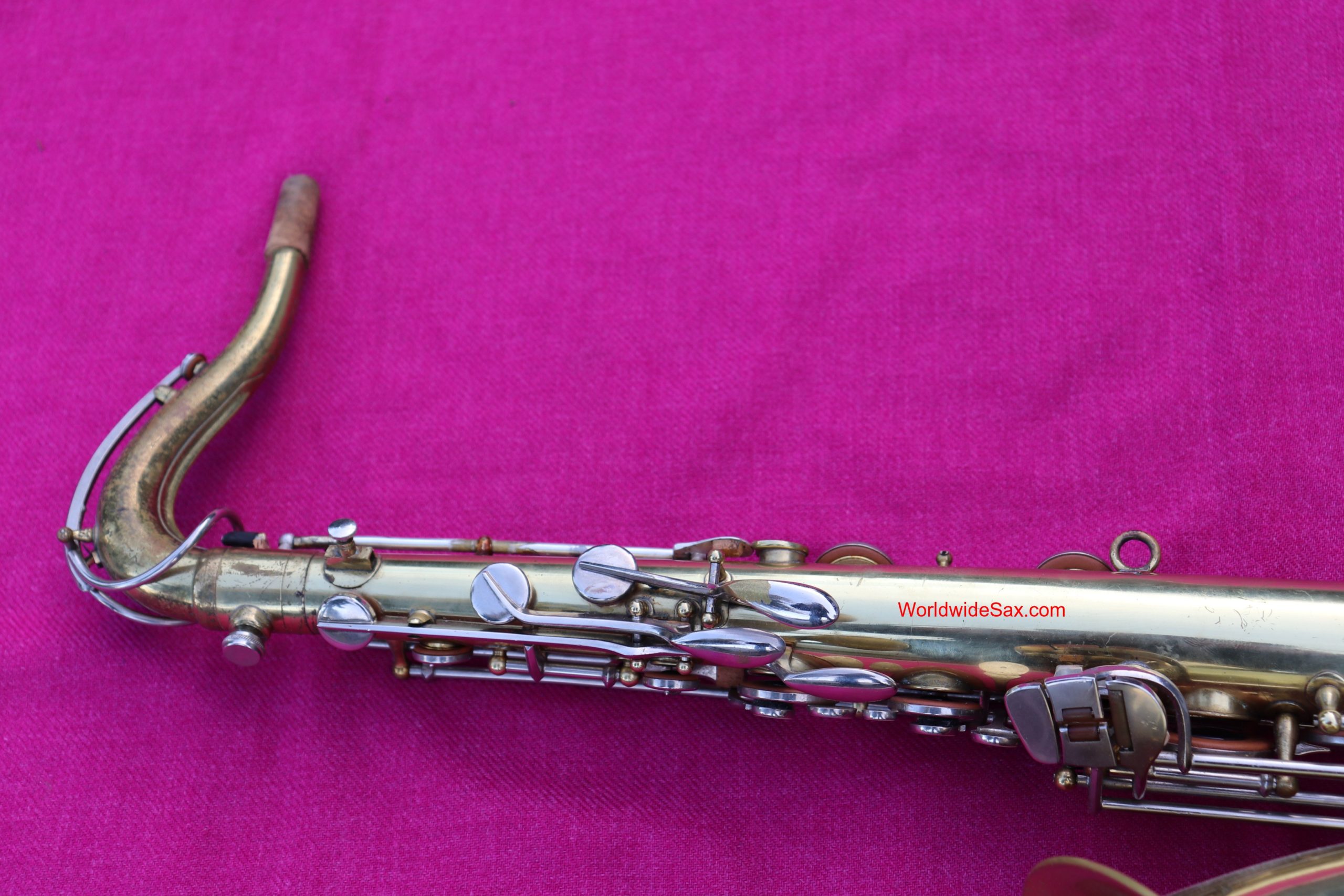
 However, if you look look at the shape of the Ace tenor’s left pinkie cluster, it doesn’t look the same. The Ace has a rounded top on the G# key like the JK, rather than a straighter D&J version. This is a strong indicator that we are not looking at a D&J horn. Or is it?
However, if you look look at the shape of the Ace tenor’s left pinkie cluster, it doesn’t look the same. The Ace has a rounded top on the G# key like the JK, rather than a straighter D&J version. This is a strong indicator that we are not looking at a D&J horn. Or is it?

This detailed shot of a 1965 tenor that shows you the shape of the G# and other keys in fantastic clarity.

However, if you look closely at the mechanism of the Ace tenor, you’ll notice that something is just a little off.
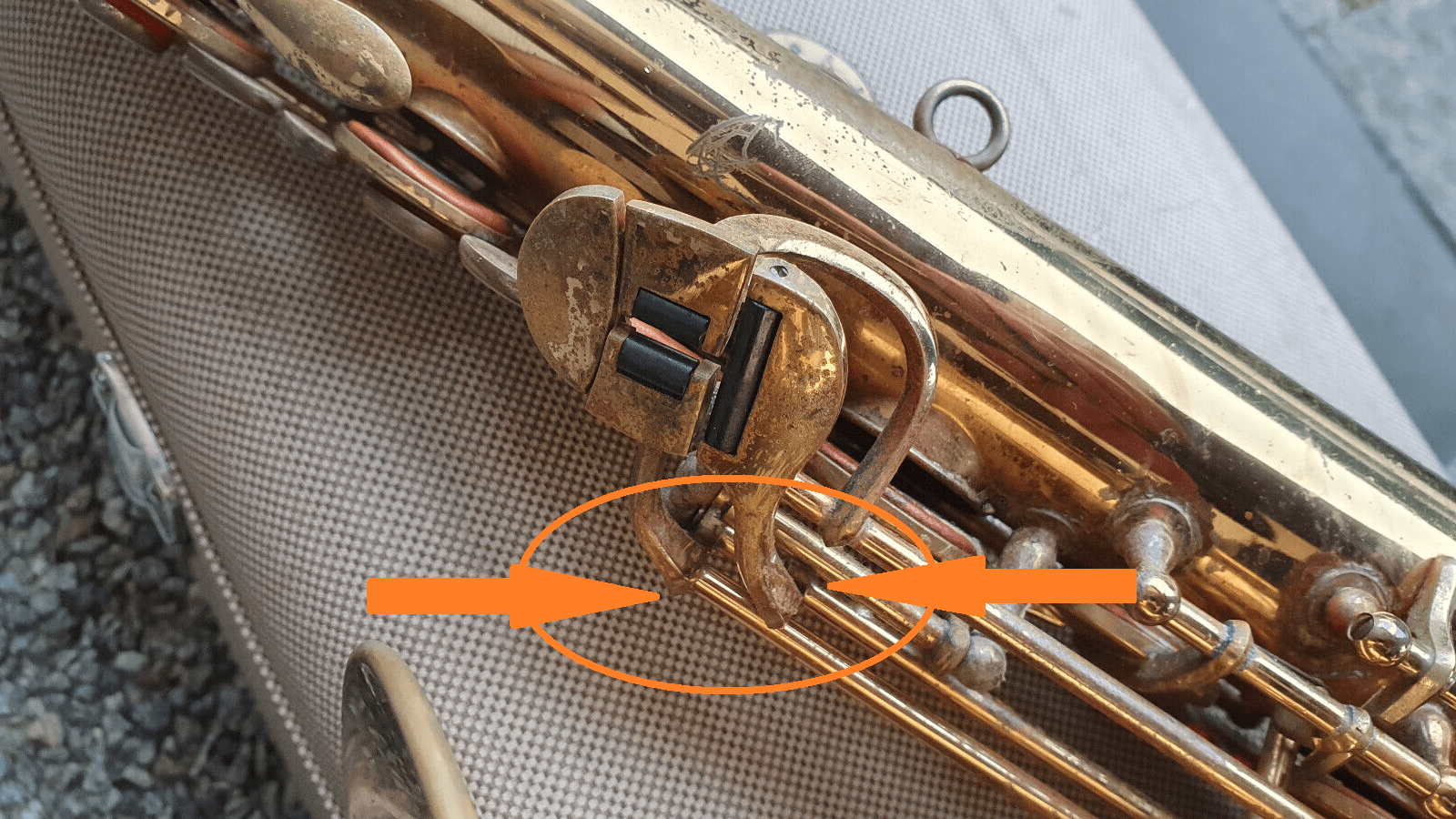
Here is what a functioning/non-repaired left pinkie cluster should look like in a Keilwerth.

Here is the same cluster on a D&J-stencilled H. Genet tenor.

Unless my eyes are deceiving me, the left pinkie cluster on the Ace tenor does not seem to be connected properly, and is likely not functioning well—or perhaps at all. But then they seller did say: “The instrument needs repair, service and cleaning….” 😉
Without seeing the instrument in person it is hard to say with 100% certainty, but based on the photos alone, I would suspect that someone not qualified/trained to properly repair woodwind instruments, has attempted to replace a damaged left pinkie cluster.
Provide your thoughts below in the comments. I would love to know if you have another explanation for what appears to be a cluster f#@! of keys for the left pinkie to try and operate. I simply cannot see how what’s there would properly operate the long rods, in order to open and close the bell keys.
What the rest of the horn looks like
Here are the rest of the pics of this Ace tenor #17890. One thing is for certain, it certainly saw considerable use in its 60 or so years.
So who do I think built this horn?
I originally started writing this article more than two weeks ago. During this time I have looked through hundreds—probably 2000+—images of both vintage Keilwerth and Dörfler & Jörka saxophones. As my research above has shown, this Ace tenor has numerous characteristics—the left pinkie cluster notwithstanding—that indicate that this horn was not made in its entirety by D&J.
We know that on December 31, 1965, Hubert Jörka retired, and that the Julius Keilwerth Company took over the production machinery and some half-finished products.
I believe that what we are seeing here is one of these horns that was partially finished; that Keilwerth got it when it took over D&J; and that JK then finished it and sold it themselves.
What leads me to this conclusion?
- The features outlined above that are not D&J features, but rather JK ones.
- The serial #17890. This is at the tail end of D&J’s production. The last serials we have seen are around 18XXX. So it tracks that a horn with a serial this close to the end of production wouldn’t be finished yet.
- Although I can’t say with 100% certainty, since I haven’t seen any paperwork personally, to the best of my knowledge D&J was building horns under various names, but not all were necessarily for ordering companies. We know for example that Gebr. Alexander Mainz, Rene Dumont, Voss, et al were stencilled for order. But what about one-offs like Artist 300? I postulate that this Ace tenor was one of these one-offs that was built on spec.
- Therefore, if the horn was built on spec it is quite conceivable that it was kicking around half finished, and that JK finished the tenor by adding their own parts. They may well have engraved, and even chosen a stencil name, for it as well. Who knows, maybe Ace was the engraver’s cat or dog. 😉 BTW, I have a cat named Ace, so it isn’t that far-fetched.

Now it’s time to have your say. What do you think? Who made it? D&J? JK? Someone else all together?
Leave your comments below and let’s talk about it. I’m curious what you all think.









